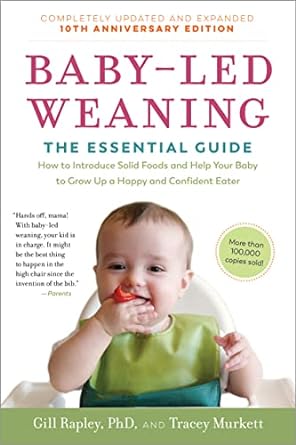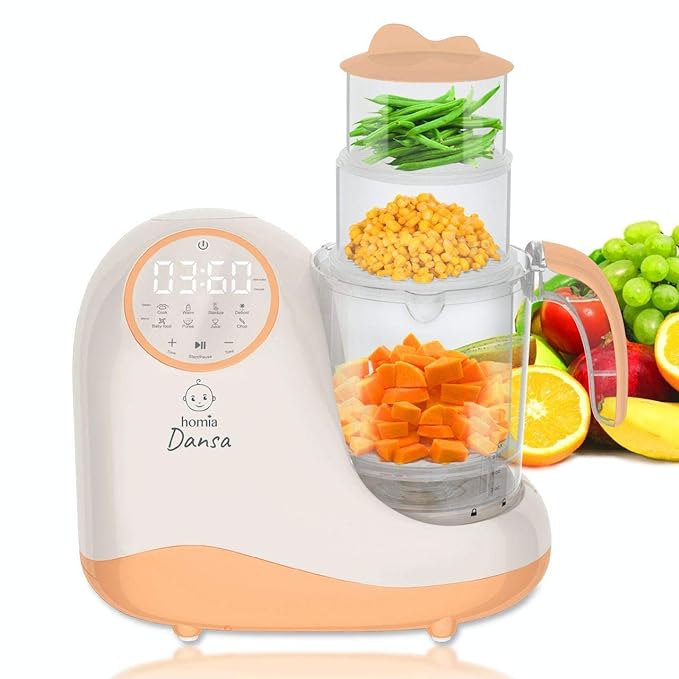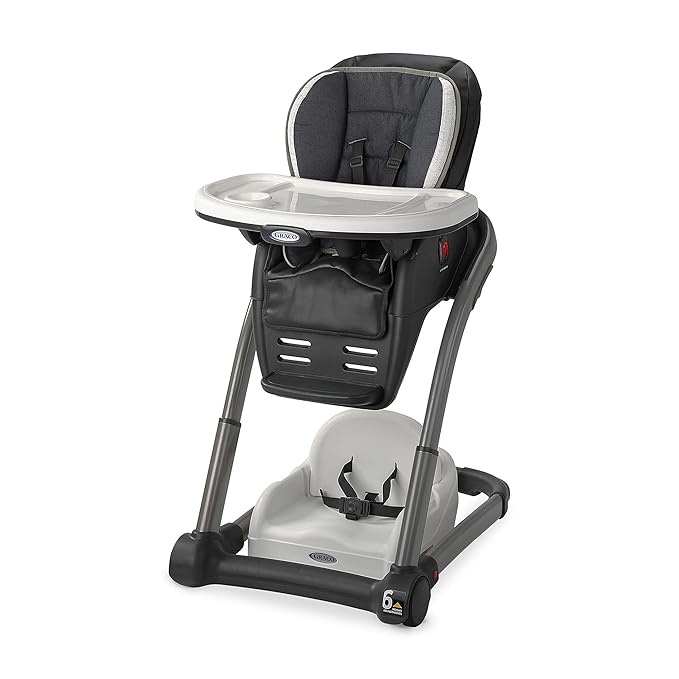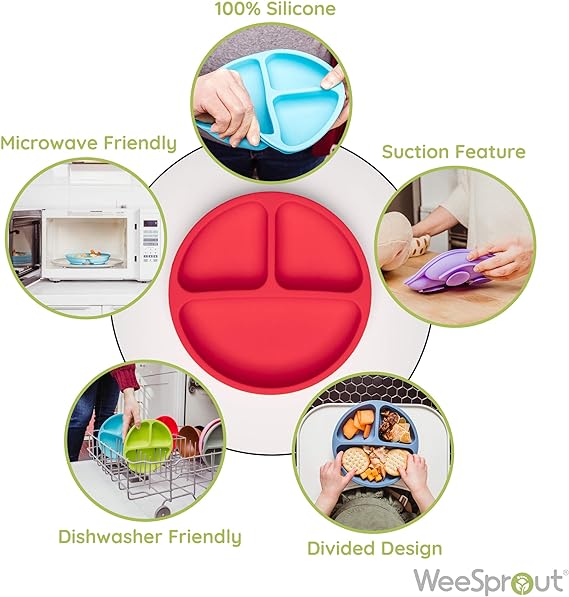Baby Led Weaning vs Purees: Finding the Right Approach for Your Baby
As a parent or caregiver, introducing solid foods to your baby is an exciting milestone. It’s a time when you can witness their growth and exploration of new tastes and textures. However, deciding between baby-led weaning vs purees can be a daunting task. In this article, we will explore both approaches, their pros and cons, and help you make an informed decision that suits your baby’s needs.
What is Baby Led Weaning?
Baby led weaning (BLW) is an approach first pioneered by Gill Rapley way back in 2001. It is the process of introducing solid foods in a way that allows babies to feed themselves from the start. Check out Gills essential guide Here
Instead of spoon-feeding purees, you offer appropriately-sized, soft, and manageable food pieces that babies can pick up and eat on their own. BLW focuses on letting babies explore different foods, textures, and tastes at their own pace.
What are Purees?
Purees, on the other hand, involve blending fruits , vegetables, and other foods into a smooth, semi-liquid consistency. The process is made easier using an all in one baby food maker.
Purees are typically spoon-fed to babies, allowing for better control over the quantity and variety of foods introduced. It is a more traditional approach to weaning and can be easily tailored to meet specific dietary needs.
Baby Led Weaning vs Purees – Pros & Cons of Both at a Glance
Pros of Baby Led Weaning:
- Promotes self-feeding and independence
- Allows babies to explore different food textures, tastes, and colors
- Encourages the development of fine motor skills and hand-eye coordination
- Supports the development of healthy eating habits and a positive relationship with food
- Provides opportunities for family meals and social interaction
- May reduce the likelihood of picky eating in the future
- Helps babies recognize hunger and fullness cues
- Can be a more enjoyable and interactive experience for both baby and caregiver
Cons of Baby Led Weaning:
- Potential for increased mess during mealtimes
- Requires close supervision to prevent choking hazards
- Some babies may take longer to consume significant amounts of food
- It may be challenging for babies with certain developmental delays or motor skill difficulties
- Certain foods may be more difficult to introduce in their whole form
- Nutritional intake may vary depending on the foods chosen by the baby
- Requires patience and time for parents/caregivers to adjust to a different feeding approach

Pros of Purees:
- Provides a smooth and controlled introduction to solid foods
- Allows for easy customization and adaptation to specific dietary needs
- Provides an opportunity to introduce a wide variety of flavors and textures gradually
- Easier for caregivers to monitor and control the quantity of food consumed
- Can be made in advance and stored for convenience
- Suitable for babies who may have difficulty chewing or swallowing solid foods initially
- Can be a preferred option for babies who are not yet developmentally ready for self-feeding
Cons of Purees:
- May not allow for the development of self-feeding skills and independence
- Potential for resistance or refusal by some babies who prefer to feed themselves
- Requires more time and effort for caregivers to prepare and puree foods
- Limits the exploration of different textures and shapes of food
- May result in a slower transition to family meals and shared mealtimes
- Less opportunity for sensory experiences and fine motor skill development compared to baby-led weaning
- Some babies may become overly dependent on being spoon-fed, making it harder to transition to self-feeding
Baby Led Weaning vs Purees – Which Approach is Right for Your Baby? – Detailed Analysis
Deciding between baby-Led weaning vs purees depends on several factors. Consider your baby’s developmental readiness, motor skills, and personality. Some babies may show a strong interest in food and have good hand-eye coordination, making BLW a suitable choice. Others may need more time to develop these skills, making purees a better option initially. Consulting with your pediatrician or a feeding specialist can also provide valuable guidance based on your baby’s individual needs.
Nutritional Benefits
Both BLW and purees can provide the necessary nutrition for your baby’s growth and development. Focus on offering a balanced diet that includes iron-rich foods, such as fortified cereals, meat, poultry, fish, and legumes. Introduce a wide range of fruits and vegetables to expose your baby to different tastes and nutrients. Breast milk or formula should remain a primary source of nutrition until your baby is around one year old.
Developmental Benefits
BLW offers unique developmental benefits as babies practice their fine motor skills, hand-eye coordination, and self-feeding abilities. The act of exploring and manipulating food pieces can enhance their sensory experiences and stimulate cognitive development. On the other hand, purees allow babies to experience new flavors and textures in a controlled manner, helping them become more receptive to a variety of foods.
Motor Skills Development
With BLW, babies learn to pick up and self-feed small, soft food pieces, which can enhance their pincer grasp and fine motor skills. Manipulating different textures, sizes, and shapes of foods can also improve hand-eye coordination. Purees, although spoon-fed, can still contribute to motor skills development as babies learn to open their mouths, swallow, and coordinate their tongue movements.
Establishing a Healthy Relationship with Food
BLW can foster a positive relationship with food as babies are exposed to a wide range of tastes and textures. They learn to regulate their own intake, recognize hunger and fullness cues, and explore food at their own pace. Purees allow for a more gradual introduction to new flavors, helping babies develop preferences and acceptance of various foods. Both approaches contribute to establishing healthy eating habits in the long run.
Mealtime Independence
BLW promotes mealtime independence as babies participate in family meals and learn to feed themselves from an early age. This can enhance their social skills, encourage family bonding, and foster a sense of inclusion. Purees, while requiring spoon-feeding, still allow for interaction and bonding during mealtime. Caregivers can engage babies by talking, making eye contact, and encouraging self-feeding with appropriate utensils as they grow.
Top Tips for Introducing Solids
Regardless of the approach you choose, here are some tips to help you introduce solids to your baby
- Start Small – Begin with single-ingredient foods, gradually introducing new flavors all the time.
- Offer a variety of textures, including soft, mashed, and finger foods.
- Invest in a decent high chair – The Graco Blossom is an Amazon Best Seller and will last all the way up to the toddler years.
- Be patient and let your baby explore at their own pace.
- Practice good hygiene and food safety when preparing and serving meals.
- Keep it relaxed: Create a positive and relaxed atmosphere during mealtime.
- Encourage self-feeding and allow your baby to develop their independence.
- Invest in a suction meal set: Keep mealtime with your toddler mess-free and stress-free with the WeeSprout silicone suction plates with lids.
Final Words From Me
When it comes to introducing solid foods to your baby and choosing between baby-led weaning vs purees, both have their advantages and considerations. Deciding which approach is right for your baby requires assessing their individual readiness, developmental skills, and personality. Remember, there is no one-size-fits-all solution. You can also combine elements of both approaches to tailor the feeding journey to your baby’s needs. Consult with your pediatrician or a feeding specialist to ensure a smooth and enjoyable transition to solids.
FAQs
- Is baby-led weaning safe? Baby-led weaning can be safe when appropriate precautions are taken. Ensure that foods are prepared in a way that minimizes choking hazards and closely supervise your baby during mealtimes.
- Can I offer purees alongside baby-led weaning? Yes, you can offer purees alongside baby-led weaning. It’s a flexible approach that allows you to introduce a variety of textures and flavors to your baby.
- How do I know if my baby is ready for solids? Look for signs of readiness, such as sitting up unassisted, showing interest in food, and loss of the tongue-thrust reflex. Consult with your pediatrician for guidance.
- Can I introduce allergenic foods during baby-led weaning? Yes, you can introduce allergenic foods during baby-led weaning. Start with small amounts and watch for any signs of allergies. Consult with your pediatrician if you have concerns.
- How long does the transition from milk to solids take? The transition from milk to solids is a gradual process that can take several months. It’s important to follow your baby’s cues and progress at their pace while ensuring they continue to receive adequate nutrition from breast milk or formula.
Remember, every baby is unique, and their journey with food will be too. Embrace the joy of exploring new tastes and textures together, and trust your instincts as you navigate this exciting phase of your baby’s development.








